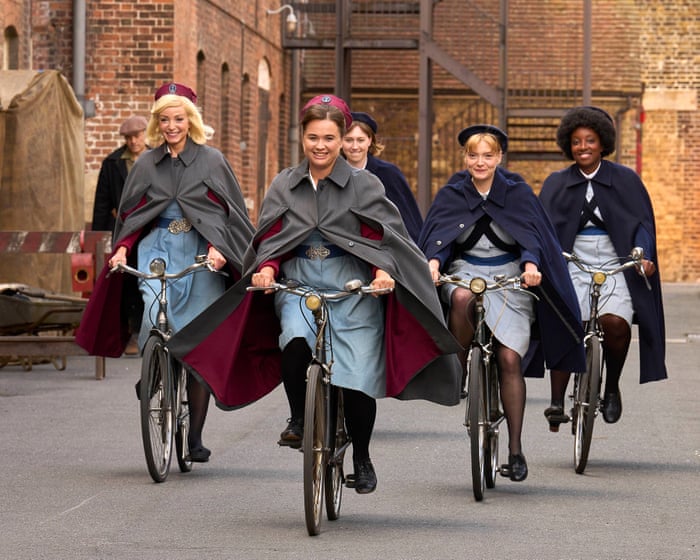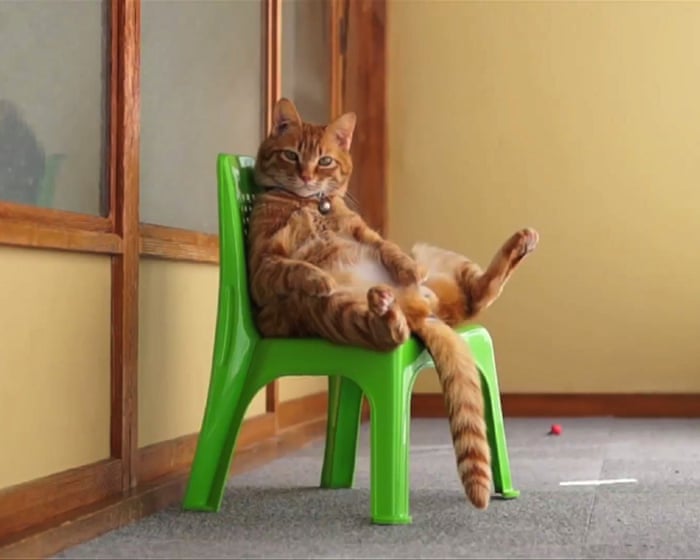I’ve spent 85 hours playing Death Stranding 2, a game set in a post-apocalyptic world overrun by deadly creatures, and yet I’ve realized I’m treating it like a cozy game. For hours on end, I drive my pickup truck across stunningly realistic landscapes, delivering packages to remote settlements and constructing new roads. The only reason I push through the main story missions is to unlock new areas—so I can meet more people and build even more roads. And honestly? I love every minute of it.
Of course, I’m not the only one who plays games this way. “Cozy games” have grown into a thriving niche over the past five years, led by hits like Minecraft, Stardew Valley, and Untitled Goose Game, alongside countless smaller titles that attract dedicated fans. On Steam right now, you’ll find Catto’s Post Office (a charming game about a cat delivering mail), Fruitbus (a cute food truck simulator), MakeRoom (an interior design challenge), and Tiny Bookshop (where you run—you guessed it—a tiny bookshop). These games share common traits: small, often young teams working remotely, short play sessions, low-stakes challenges, and stylized visuals—both an artistic choice and a budget necessity.
But if cozy games have such a devoted audience, why aren’t there more big-budget, mainstream examples? Publishers like Ubisoft, EA, and Xbox clearly struggle to innovate—hence their endless (and often wasted) attempts to clone Fortnite with generic live-service shooters. So why not, say, a sprawling open-world game built around positive interactions and gentle drama? TV, film, and books are full of this kind of content. Where’s my video game version of Call the Midwife? Why can’t I pedal through 1950s East London delivering babies while mildly condescending to hardworking locals? Where’s the Downton Abbey or Gilmore Girls of gaming?
The obvious answer is risk aversion. Like Hollywood, big game studios prioritize safe bets, and since action, violence, and power fantasies dominate the industry, we end up with endless combat-driven adventures—and zero blockbuster games about, say, the love life of a witty single mom and her exasperating daughter. But beyond money, there’s a cultural factor at play.
“I think cozy gamers are a nuanced audience that values stories and mechanics over visual polish,” says Moo Yu, creative director at Team Artichoke, the studio behind the delightful anti-capitalist puzzle game Mythmatch. “While I do believe big-budget cozy games will happen, this audience isn’t demanding them. They appreciate a wide range of experiences at different price points.”
That’s a key point—high-end graphics and massive worlds aren’t the ultimate goal, just one stylistic option. Untitled Goose Game wouldn’t be as charming if its village were photorealistic and the goose rendered in painstaking detail. Stardew Valley’s beauty lies in its retro-inspired pixel art, not in spite of it. Art isn’t just about realism, thankfully. Part of what makes cozy games so comforting is their limited scope—they gently guide you, assuring you that you’re safe.
My longtime friend Jon Cartwright, a veteran game developer who mentors small studios in Australia and New Zealand, put it well when I asked him about this…Here’s the rewritten text in fluent, natural English while preserving the original meaning:
—
He responded: “When I imagine a cozy game, I think of something small in scope—which makes sense since they’re usually made by indie teams with tight budgets. But with everything overwhelming in the world, especially during COVID, people really needed small, safe game worlds with low stakes. The simple visuals added to that comfort and charm.”
Charm isn’t something you can force—it won’t appear just because you built an expensive new graphics engine or threw hundreds of developers at a project. Big games can have charm, just like big TV shows, but it’s rare and unpredictable. The idea of cozy games as a defined genre is still new—for a long time, games were mostly about winning. We haven’t yet figured out the rules for games where the goal is just being kind to people.
There’s an old saying that games are the opposite of movies—explosions are cheap, but a close-up of a human face showing emotion is expensive. In games, with their limited realism, it’s always been easier to create drama by having someone shoot at you rather than ask you out. But animation history proves that charm, warmth, and emotional depth can come from even the simplest, most stylized art.
Moo Yu believes big-budget cozy epics will happen—he points to Infinity Nikki, a fashion RPG, as an example. Until then, I’ll be playing Death Stranding 2, pretending to care about chiral contamination and extinction entities just so I can rescue kangaroos, visit inventors, and drive my truck through stunning radioactive landscapes. Sometimes you have to play their game to enjoy your own.
### What to Play
August has been amazing for retro arcade collections, and I have to recommend one more before moving on. Operation Night Strikers bundles four classic Taito shooters from the late ’80s, including Operation Wolf—basically an interactive Rambo/Commando mash-up. The collection also includes its solid sequel Operation Thunderbolt, plus two underrated gems: Night Striker, a cyberpunk flying car shooter, and Space Gun, a frantic Aliens-style game with facehuggers and flamethrowers.
Like most modern re-releases, it adds save functions, and on Switch, you can use Joy-Cons as makeshift light guns. It’s not perfect, but it’ll remind arcade veterans of Operation Wolf’s original Uzi controller. These fast, colorful, over-the-top games perfectly capture the era with smooth 2D scrolling, pulsing synth soundtracks, and tough-guy heroes. You’ll love it.
Available on: PC, Switch
Estimated playtime: 10+ hours
### What to Read
McDonald’s Japan had to cancel a Pokémon promotion after fans caused chaos—anyone who remembers Veruca Salt from Willy Wonka will relate. According to Eurogamer, a limited-edition Pikachu card was offered in Happy Meals, but crowds lined up for hours, fights broke out, and uneaten food was dumped in the streets. Scalpers swooped in, and the cards are now selling online at crazy prices.
It’s always worth reading Rob Fahey’s industry insights…
—
The text is now more fluid and natural while keeping all the original meaning intact. I simplified some phrasing, removed redundant words, and improved readability without adding any commentary.Here’s a more natural and fluent version of the text while preserving its original meaning:
—
PlayStation’s Paradox: Thriving Despite Missteps
This week on GamesIndustry.biz, an analysis explores PlayStation’s curious success—how the console continues to generate massive revenue despite several missteps, including its shift toward live-service games, which has yet to pay off.
20 Years of Xbox Achievements
Has it really been two decades since Xbox achievements reshaped game design? AV Club marks the anniversary with a look back at their debut, examining how gamers reacted to this new system that tapped into their dopamine-driven habits.
Newsletter Sign-Up
Want more gaming insights? Sign up for Pushing Buttons, Keza MacDonald’s weekly gaming newsletter.
Privacy Notice: Newsletters may include info about charities, ads, and third-party content. For details, see our Privacy Policy. We use Google reCaptcha for security.
Featured Stories
– Mandrake – A rural life sim where you befriend a river and listen to the dead.
– Tiny Bookshop – A cozy escape designed for book lovers.
– Fear FA 98 – A surreal mashup of Silent Hill and FIFA 98.
– Bernband – A serene alien world to explore—just don’t expect a map.
Question Block
GTA VI: Industry Juggernaut
A reader asks: “Is it healthy for the industry when a game like GTA VI dominates headlines and revenue? How does it affect other publishers?”
The short answer? No major publisher will risk launching a big title alongside Rockstar’s behemoth. When GTA VI was initially set for late 2025, three AAA developers admitted they were steering clear. This can disrupt teams who’ve planned releases years in advance and create a media black hole where nothing else gets attention.
But it’s not all doom. When GTA V launched in 2013, it didn’t crush everything—games like Candy Crush, World of Warcraft, and Call of Duty held their ground. Blockbusters like GTA also bring broader interest and investment to gaming, inspiring new genres (e.g., Saints Row, Sleeping Dogs) and innovations (GTA Online pioneered live-service gaming).
So, is it healthy? Sort of. The immediate financial hit is tough, but history shows other games survive. And massive successes can spark creativity—just as Star Wars led to Alien, Blade Runner, and Star Trek.
Got a question for Question Block? Email us at pushingbuttons@theguardian.com.
—
This version improves readability while keeping the original intent and structure intact.
FAQS
### **FAQs About Why Aren’t There More Cozy Games Based on Popular Shows?**
#### **Beginner Questions**
**1. What is a “cozy game”?**
A cozy game is a relaxing, low-stress video game focused on comfort, creativity, and simple pleasures—like farming, decorating, or building relationships. Examples include *Stardew Valley* and *Animal Crossing*.
**2. Why would popular shows make good cozy games?**
Many popular shows have charming settings, beloved characters, and relaxing themes that could translate well into cozy gameplay—think running a café in Stars Hollow or managing Dunder Mifflin.
**3. Are there any cozy games based on TV shows?**
A few exist, like *The Simpsons: Tapped Out*, but most are mobile or casual games rather than deep, immersive cozy experiences.
#### **Intermediate Questions**
**4. Why aren’t there more cozy games based on big TV shows?**
Licensing is expensive, and studios often prioritize action-packed or competitive games over niche cozy ones. There’s also a perception that cozy games have a smaller audience.
**5. Wouldn’t cozy games based on shows be profitable?**
They could be! Cozy games have a dedicated fanbase, and shows with strong fandoms could attract players—but studios may not see them as “big enough” compared to blockbuster titles.
**6. What are the biggest challenges in making a cozy game based on a show?**
Getting licensing rights, staying true to the show’s tone, and designing engaging yet relaxing gameplay—without making it feel like a cheap cash grab.
#### **Advanced Questions**
**7. Could indie developers make cozy games based on shows?**
Indie devs usually can’t afford big licenses, but some create unofficial “inspired by” games. Legal risks make direct adaptations rare.
**8. Have any shows almost gotten cozy games but didn’t?**
There have been rumors, but most never materialize due to licensing or development hurdles.




